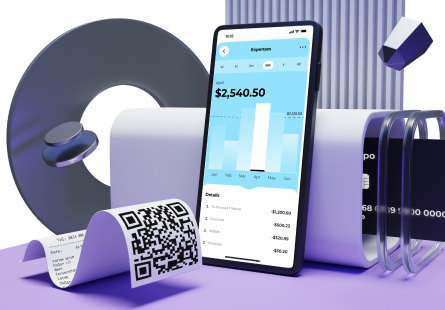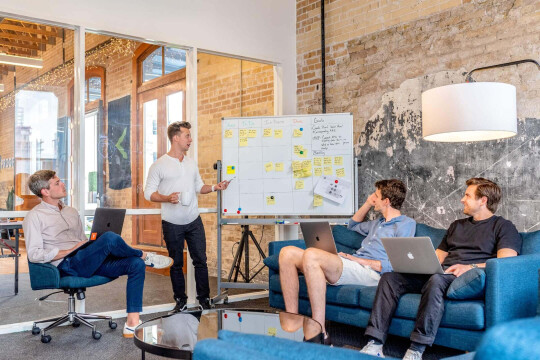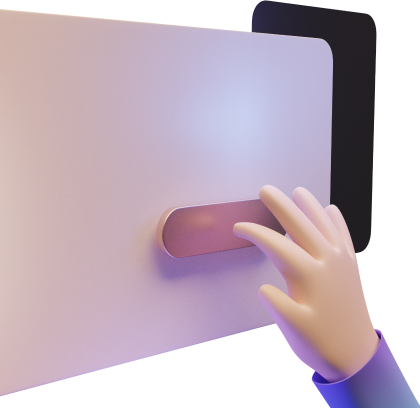In the fast-paced world of software product development, innovation is the lifeblood that propels companies ahead of the competition. Rapid prototyping has emerged as a key strategy to infuse innovation into the development process, allowing teams to iterate quickly, test ideas, and adapt to changing requirements. In this article, we will delve into the concept of rapid prototyping, its myriad benefits, and how it serves as a catalyst for fostering a culture of innovation within development teams.
What is rapid prototyping? Key attributes and advantages.
Rapid prototyping is a development methodology that involves quickly creating and iterating on early versions of a product or system to validate ideas, test functionality, and gather feedback. It is widely used in various fields, including software development, product design, and manufacturing. The primary goal of rapid prototyping is to accelerate the development process, minimize risks, and ensure that the final product meets user expectations.
Key characteristics of rapid prototyping include:
Quick iterations
Rapid prototyping emphasizes the creation of prototypes in a short period. This allows for quick iterations and updates based on feedback, ensuring that the development team can respond promptly to changing requirements or issues identified during testing.
Minimalistic representations
Prototypes created in rapid prototyping are often simplified versions of the final product. They focus on essential features and functionality, allowing teams to prioritize testing and validation of core concepts without investing extensive time and resources in detailed development.
User-centric focus
User feedback is a central component of rapid prototyping. By obtaining input from end users early in the development process, teams can identify and address potential issues, validate assumptions, and ensure that the final product aligns with user needs and expectations.
Cross-functional collaboration
Rapid prototyping encourages collaboration among cross-functional teams, including designers, developers, and stakeholders. This collaborative approach fosters a shared understanding of project goals and facilitates communication, leading to a more cohesive and efficient development process.
Risk mitigation
The iterative nature of rapid prototyping helps in identifying and mitigating risks early in the development cycle. By uncovering issues during the prototyping phase, teams can address challenges when they are easier and less costly to resolve, reducing the likelihood of major issues arising in later stages of development.
Adaptability
Rapid prototyping promotes an adaptable development process. Teams can quickly respond to changing requirements, market conditions, or user feedback, allowing for a more flexible and responsive approach to product development.
Cost efficiency
Identifying and addressing issues early in the development process is more cost-effective than making changes later on. Rapid prototyping minimizes the risk of investing significant resources in a product that may ultimately not meet user expectations, resulting in potential cost savings.
Innovation catalyst
Beyond its practical advantages, rapid prototyping serves as a catalyst for innovation within development teams. It encourages experimentation, creativity, and a willingness to test new ideas, fostering a dynamic and forward-thinking culture.
Overall, rapid prototyping is a valuable approach for development teams looking to streamline their processes, enhance collaboration, and deliver products that are not only functional but also aligned with user needs and preferences. This methodology has become increasingly popular in industries where agility, innovation, and user satisfaction are paramount.
The steps of the rapid prototyping process
The rapid prototyping process typically involves several iterative steps, allowing for quick development, testing, and refinement of a product or system. While the specific steps may vary depending on the project and the chosen methodology, here is a general outline of the rapid prototyping process:
1. Define objectives and requirements
Clearly outline the goals and objectives of the project. Identify the key requirements and features that the prototype should include. This step sets the foundation for the development process.
2. Sketching/ideation
Brainstorm and sketch out ideas for the prototype. This can involve rough drawings, wireframes, or low-fidelity mock-ups that illustrate the basic layout and structure of the product. The emphasis is on capturing the essential concepts.
3. Create a low-fidelity prototype
Develop a basic, low-fidelity prototype using simple tools or prototyping software. This initial prototype should focus on core features and functionality, providing a tangible representation of the concept without extensive details.
4. User feedback and testing
Share the low-fidelity prototype with stakeholders, users, or a target audience for feedback. Collect input on usability, design, and functionality. Use this feedback to identify potential improvements and necessary changes for the next iteration.
5. Refinement
Based on the feedback received, refine the prototype. This may involve making adjustments to the user interface, improving functionality, or addressing any identified issues. The goal is to enhance the prototype iteratively.
6. High-fidelity prototyping
Develop a more detailed and polished high-fidelity prototype. This version may include more advanced features, realistic design elements, and a closer representation of the final product. It provides a more comprehensive experience for testing and validation.
7. User testing (iterative)
Conduct user testing with the high-fidelity prototype, gathering feedback on the refined version. Iterate on the design and functionality based on the testing results. This step may be repeated multiple times to ensure continuous improvement.
8. Integration of feedback
Integrate the feedback received during user testing into the prototype. This may involve making further refinements, addressing usability issues, and ensuring that the prototype aligns with user expectations.
9. Finalization
Finalize the prototype based on the accumulated feedback and iterations. Ensure that it meets the defined objectives and requirements. This version serves as a model for the final product or as a reference for further development.
10. Handoff to development
Once the prototype is refined and validated, hand off the specifications, design assets, and any relevant documentation to the development team. The insights gained during the rapid prototyping process inform the development of the actual product.
11. Iterative development (optional)
In some cases, the rapid prototyping process may continue in parallel with the development of the final product. Teams may iterate on specific features or aspects of the product based on ongoing feedback and testing.
12. Launch and monitor
Launch the final product and monitor its performance. Collect user feedback in the live environment and use insights for future updates or iterations. The rapid prototyping process can inform ongoing improvements even after the initial launch.
By following these steps, development teams can leverage rapid prototyping to accelerate the development cycle, enhance collaboration, and deliver a product that is more likely to meet user expectations. The iterative nature of the process allows for continuous improvement and adaptation to changing requirements.
What’s the role of rapid prototyping in fostering innovation?
The role of rapid prototyping in fostering innovation is multifaceted, contributing to a dynamic and forward-thinking culture within development teams. Here are key aspects that highlight the pivotal role of rapid prototyping in driving innovation:
Encouraging experimentation
Rapid prototyping provides a platform for teams to experiment freely with new ideas, concepts, and features. The low-cost, low-risk nature of prototypes encourages a culture of experimentation where team members feel empowered to explore innovative solutions without the fear of significant investment or failure.
Facilitating iterative refinement
Innovation often thrives in environments that support continuous improvement. Rapid prototyping, by nature, involves iterative refinement based on feedback. This iterative process allows teams to test, learn, and refine their ideas, fostering a culture that values ongoing enhancement and innovation.
User-centric design approach
Innovations that resonate with users are more likely to succeed. Rapid prototyping facilitates a user-centric design approach by involving end users early in the development process. This direct interaction with users ensures that innovative ideas align with user needs and preferences, leading to more successful and user-friendly products.
Breaking down silos
Traditional development processes often result in siloed teams with limited communication. Rapid prototyping encourages collaboration between cross-functional teams, including designers, developers, and stakeholders. Breaking down these silos fosters an environment where ideas flow freely across disciplines, leading to innovative solutions that leverage diverse expertise.
Speeding up the innovation cycle
Traditional development cycles can be lengthy, delaying the implementation of innovative ideas. Rapid prototyping accelerates the innovation cycle by enabling quick idea validation and testing. This speed allows teams to explore more ideas in a shorter time frame, increasing the likelihood of discovering novel and effective solutions.
Cultivating a culture of adaptability
Innovation often requires adaptability to changing circumstances, user feedback, or market conditions. Rapid prototyping instills a culture of adaptability within development teams. The ability to pivot quickly based on insights gained from prototypes ensures that teams stay responsive to evolving requirements and opportunities.
Empowering creative problem-solving
Rapid prototyping empowers teams to creatively address challenges and solve problems. The iterative nature of the process encourages a mindset that values creative problem-solving over rigid adherence to predefined solutions. This mindset shift can lead to breakthrough innovations and unconventional solutions.
Aligning innovation with market needs
Bringing innovative ideas to market successfully requires a deep understanding of user needs and market demands. Rapid prototyping allows teams to gather real-world feedback early in the development process, ensuring that innovations are aligned with actual market needs and have a higher chance of acceptance and adoption.
Building confidence in innovation
Rapid prototyping helps build confidence in innovative ideas by providing tangible evidence of their feasibility and potential success. Successful prototypes serve as proof of concept, instilling confidence in both team members and stakeholders that the innovative approach is viable and worthy of further investment.
In summary, rapid prototyping plays a crucial role in fostering innovation by providing a conducive environment for experimentation, iterative refinement, user-centric design, and adaptability. By embracing rapid prototyping, development teams can cultivate a culture that values creativity, embraces change, and consistently delivers innovative solutions to meet evolving challenges and opportunities.
Final words
Rapid prototyping stands as a powerful methodology in software product development, offering a multitude of benefits that extend beyond just accelerated development cycles. By fostering a culture of innovation, encouraging experimentation, and promoting collaboration, rapid prototyping becomes a catalyst for success in an industry where adaptability and user-centric design are paramount.
Development teams that embrace rapid prototyping not only reduce time to market and mitigate risks but also position themselves at the forefront of innovation. In a landscape where change is constant, rapid prototyping emerges as a dynamic force, propelling software development teams toward greater creativity, adaptability, and ultimately, success in delivering products that truly resonate with their users.







